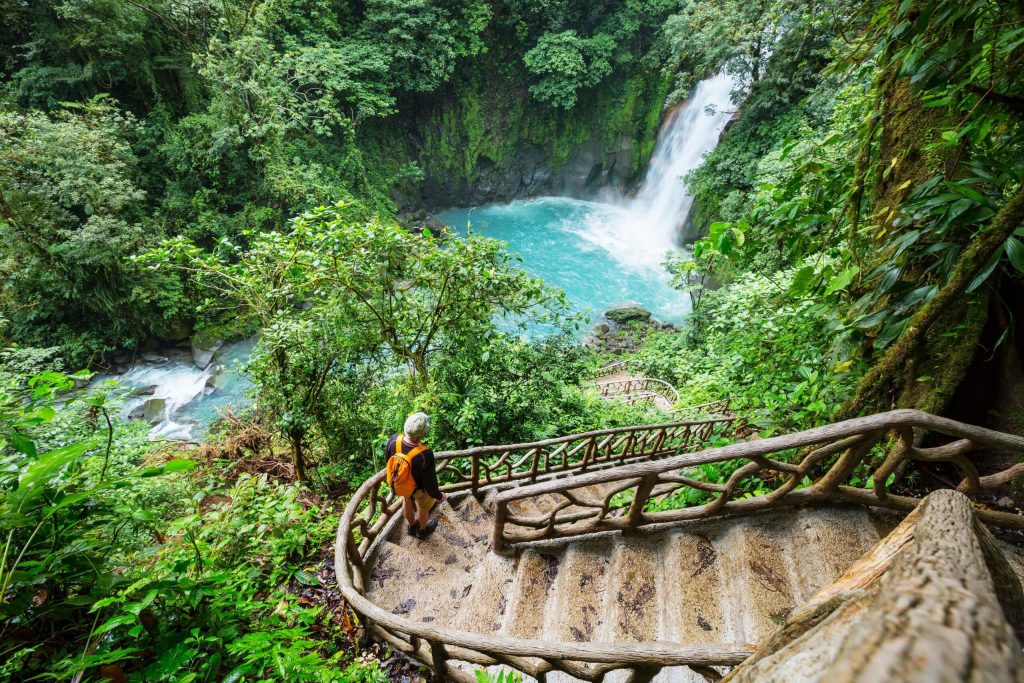La Paz (Spanish: “the peace”) is a waterfall in central Costa Rica. In Spanish, it is known as Catarata de La Paz. It is 31 kilometres (19 mi) north of Alajuela, between Vara Blanca and Cinchona.
The waterfall is located immediately alongside the road from Alajuela that leads to the northern plains of Costa Rica. The River La Paz forms the waterfall after traversing 8 kilometres (5 mi) of volcanic terrain, and then continues through the rainforest of the eastern side of Poás Volcano. A short path leads behind the waterfall, where a small shrine had been located. Upstream from the waterfall is La Paz Waterfall Gardens, a hotel and park, where visitors can observe many different species of local wildlife.

The waterfall and surrounding area were severely damaged in the 6.1 magnitude earthquake of January 8, 2009. Landslides damaged the road that runs alongside the waterfall
Wikipedia
Costa Rica has been known for its stable democracy, in a region that has had some instability, and for its highly educated workforce, most of whom speak English. The country spends roughly 6.9% of its budget (2016) on education, compared to a global average of 4.4%. Its economy, once heavily dependent on agriculture, has diversified to include sectors such as finance, corporate services for foreign companies, pharmaceuticals, and ecotourism. Many foreign companies (manufacturing and services) operate in Costa Rica’s free trade zones (FTZ) where they benefit from investment and tax incentives.

In spite of impressive growth in the gross domestic product (GDP), low inflation, moderate interest rates and an acceptable unemployment level, Costa Rica in 2017 was facing a liquidity crisis due to a growing debt and budget deficit. By August 2017, the Treasury was having difficulty paying its obligations. Other challenges facing the country in its attempts to improve the economy by increasing foreign investment include a poor infrastructure and a need to improve public sector efficiency.
Costa Rica was sparsely inhabited by indigenous peoples before coming under Spanish rule in the 16th century
Wikipedia
Costa Rica was sparsely inhabited by indigenous peoples before coming under Spanish rule in the 16th century. It remained a peripheral colony of the empire until independence as part of the short-lived First Mexican Empire, followed by membership in the United Provinces of Central America, from which it formally declared independence in 1847. Since then, Costa Rica has remained among the most stable, prosperous, and progressive nations in Latin America. Following the brief Costa Rican Civil War, it permanently abolished its army in 1949, becoming one of only a few sovereign nations without a standing army.
